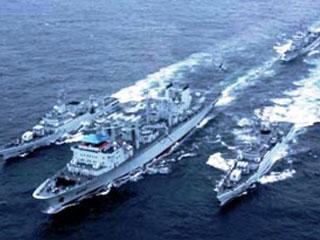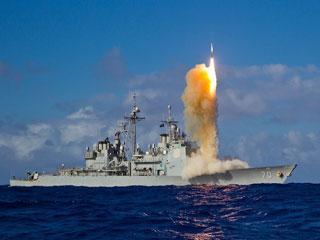
A file photo.
QINGDAO, CHINA (AP): China's Navy commissioned 17 new warships last year, the most of any nation. In a little more than a decade, it is expected to have three aircraft carriers, giving it more clout than ever in a region of contested seas and festering territorial disputes.
Those numbers testify to huge increases in defence spending that have endowed China with the largest military budget behind the United States and fuelled an increasingly large and sophisticated defence industry. While Beijing still lags far behind the US in both funding and technology, its spending boom is attracting new scrutiny at a time of severe cuts in US defence budgets.
Beijing's newfound military clout is one of many issues confronting President Barack Obama as he visits the region this week. Washington is faced with the daunting task of fulfilling its treaty obligations to allies such as Japan and the Philippines.
China's boosted defence spending this year grew 12.2 per cent to 132 billion USD, continuing more than two decades of nearly unbroken double-digit percentage increases that have afforded Beijing the means to potentially alter the balance of power in the Asia-Pacific.
Increases in spending signal "strength and resolve to China's neighbours," requiring other countries to pay close attention to where Beijing is assigning its resources, said China defence expert Abraham Denmark, vice president for political and security affairs at the US-based National Bureau of Asian Research.
At the same time, the US military is seeking to redirect resources to the Asia-Pacific as it draws down its defence commitment in Afghanistan, although officers warn that budget cuts could potentially threaten plans to base 60 per cent of US naval assets to the region. Chief of Naval Operations Adm. Jonathan Greenert recently warned that US capabilities to project power "would not stay ahead" of those of potential adversaries, given the fiscal restraints.
China commissioned its first aircraft carrier 'a refurbished Ukrainian hull' in 2012, and another two indigenous carriers are expected to enter service by 2025, significantly increasing Beijing's ability to project power into the South China Sea that it claims virtually in its entirety.
Analysts say China will have as many as 78 submarines by 2020, part of an expansion that has seen it leap past the US and Russia in numbers of warships delivered annually.
Despite the impressive hardware, uncertainty still surrounds the capabilities of China's armed forces, which have not seen significant combat since the end of the Korean War in 1953. Home-grown technologies have yet to be tested in battle, and training and organisation are hampered by a risk-adverse attitude and overemphasis on political indoctrination that reflects the People's Liberation Army's essential role as the defender of the ruling Communist Party.
"Being the world leader is all about software and networking," said Denny Roy, an expert on the Chinese military at the East-West Centre in Hawaii.
 Previous Article
Previous Article Next Article
Next Article













The Indian Air Force, in its flight trials evaluation report submitted before the Defence Ministry l..
view articleAn insight into the Medium Multi-Role Combat Aircraft competition...
view articleSky enthusiasts can now spot the International Space Station (ISS) commanded by Indian-American astr..
view article